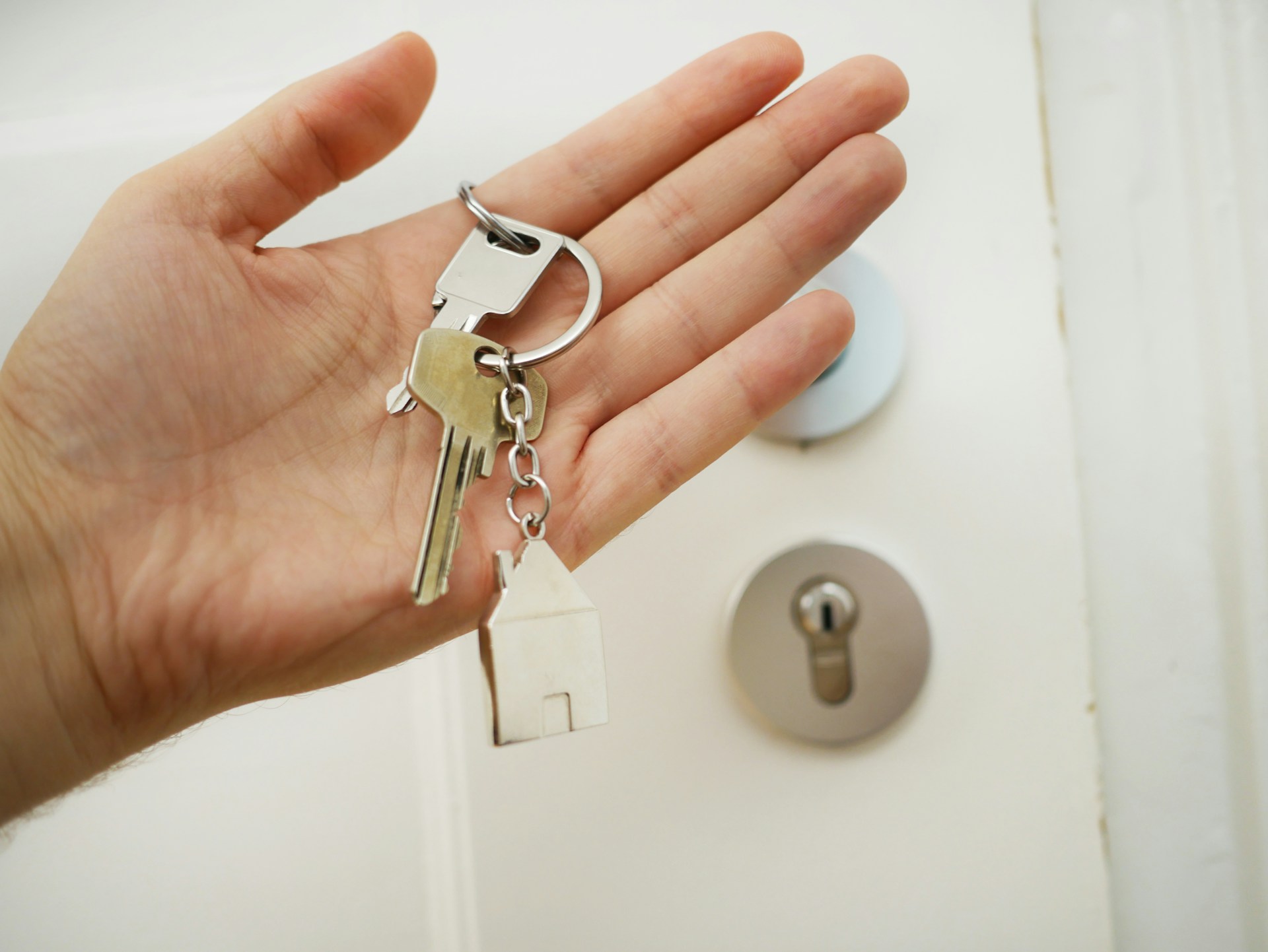Buying a home with no proof of income may seem impossible, but it’s more common than you think. Many Houston buyers—especially those who are self-employed or earn cash income—struggle with traditional loan requirements.
The good news? You can still buy a home without W-2s or tax returns by using flexible financing options like owner financing. At Houston Owner Financing, we help everyday buyers turn that challenge into a real opportunity.
Instead of relying on banks, you work directly with sellers who understand your financial situation. It’s a simple path for those who have the funds and discipline to own a home but don’t fit the usual lender checklist.
In this guide, you’ll learn how to buy a home with no proof of income in Houston. You’ll also discover what lenders and sellers look for, and how to prepare your documents. It also has practical steps to improve your approval chances and move closer to buying your new home.
Understanding No-Income-Verification Mortgages
No-income-verification loans let you buy a home even if you can’t show the usual proof, like W2s or tax returns. These loans work differently—they check other parts of your financial life. Knowing your options can help you find a way in.
What Is a No Proof of Income Loan
A no proof of income loan is for buyers who can’t show income with regular documents. You don’t provide W2s or tax returns. Lenders look at your savings, assets, or cash flow instead.
This is good if you’re self-employed, have irregular income, or are new to the country. The lender relies on other signs of your financial health, not just your paycheck history.
These loans might have higher interest rates or bigger down payments since there’s more risk for the lender. Still, they open a door for people who get stuck with strict bank rules.
Types of No-Income Documentation Loans
There are a few loan types that don’t need regular income proof:
- Asset-based loans: Approve you based on your savings or investments.
- Bank statement loans: Use your bank records to show money coming in.
- No-doc loans: Need very little paperwork, focusing on your credit score or collateral.
Each type checks your finances in a different way. Some want a bigger down payment or a higher credit score. The best firms offer flexible options if you don’t fit the usual lending mold.
Eligibility Criteria for Buying a Home Without Proof of Income
When you’re buying a home without showing proof of income, a few things matter most: your credit score, your down payment, and some other personal factors sellers or lenders care about. Knowing what’s important helps you get ready and find a good deal.
Understanding Debt-to-Income Ratios Without Traditional Proof
Even when you can’t provide W-2s or tax returns, lenders or sellers still want to see how much of your income goes toward debt. This is called your debt-to-income (DTI) ratio. It shows whether your payments are manageable compared to what you earn or deposit.
According to the Consumer Financial Protection Bureau (CFPB), a lower DTI ratio (ideally below 43%) shows you’re likely to manage mortgage payments responsibly. When using owner financing, sellers rely on bank deposits or rental history to estimate your DTI instead of your income documents.
Keeping your DTI low can improve your approval odds and help you secure better payment terms with flexible financing.
Minimum Credit Score Requirements
Even if you don’t have regular income documents, your credit score still matters. Most sellers or private lenders look for a score around 580 to 620. Some owner financing options are more flexible, but improving your credit always helps.
If your credit’s lower, don’t stress too much. They often work with buyers in that spot, focusing more on your ability to pay than on strict credit rules. Showing you’ve paid rent, utilities, or other bills on time can also help.
Down Payment Expectations
A bigger down payment helps a lot when you don’t have income proof. Sellers want to see that you’ve got some skin in the game. Usually, you’ll need to put down at least 10% to 20% of the price. Sometimes, you can do less if the rest of your offer is strong.
Saving up cash for a down payment not only improves your odds but might get you better terms on your owner financing deal. Be upfront about your savings and how you’ll cover both the down payment and any closing costs.
Other Qualifying Factors
Besides credit and down payment, sellers and private lenders look at a few other things if you can’t prove income:
- Payment history: Rent receipts or proof that you pay bills on time really help.
- Savings and assets: Bank statements showing steady savings or other assets.
- Employment type: Self-employed or irregular income can work if you can explain it.
- References: Personal or business references can add trust.
A trusted company helps you pull together what you need and build a strong offer based on your real situation.
Application Process for No Income Verification Loans
Applying for a no-income verification loan means showing lenders you can pay, just in different ways. You’ll need to prep important documents, follow a few steps, and know how long things might take. Being organized helps things go smoothly.
Preparing Your Documentation
You won’t need W2s or tax returns, but lenders still want to see that you’ve got money coming in. Gather bank statements that show regular deposits. Add savings account statements, proof of assets, or business profit and loss reports if you’re self-employed.
Rental history or on-time bill payments can help, too. Getting this together early saves time. An experienced owner financing professional can tell you what’s best for your situation.
Have these ready:
- Recent bank statements (3–6 months)
- Asset statements (investments, savings)
- Alternative income proof (contracts, invoices, or bills paid on time)
Steps to Apply
Kick things off with a detailed loan application. You’ll explain your job, your income sources, and the home you want. Be honest and thorough. Next, send in your documents. The lender or loan provider reviews them and might ask for more info.
They’re looking for steady income patterns and your ability to pay monthly. If you’re accepted, you’ll get a loan offer with the payment amount, interest rate, and length. If it works for you, it’s time to sign and close.
The steps go like this:
- Fill out the application
- Submit your alternative income documents
- Review the loan terms
- Sign and close
Timeline and Approval Process
Approval usually happens faster than with regular mortgages since you’re skipping the long income checks. It can take a few days to a couple of weeks, depending on how fast you get your documents in and how busy things are.
This approach is known for quick approvals and clear communication throughout the process. Responding quickly to requests helps move things along.
Once you’re approved, you’ll get clear next steps. Closing gets scheduled based on your timeline and any seller conditions. Have extra info ready in case they ask for it.
Here’s what the timeline often looks like:
| Step | Timeframe |
| Application | 1–3 days |
| Document Review | 3–7 days |
| Loan Approval | 1–5 days |
| Closing | 1–3 days after approval |
Alternatives to Traditional Income Verification
If you don’t have the usual proof of income like W-2s or tax returns, you’re not out of luck. Some lenders look at your assets or bank activity instead. These methods let you show that you can afford a mortgage in other ways.
Asset-Based Mortgages
Asset-based mortgages focus on what you’ve saved or invested. Instead of income, you show your bank accounts, stocks, or valuables. Lenders figure out how much you can pay by dividing your assets by a set number of months, usually 36 or 60.
For example, if you have $90,000 in assets and the lender uses 60 months, they’ll see you can cover $1,500 a month. This option works well if you have a solid savings account or investments, but don’t get regular paychecks.
Just make sure your assets are accessible, since lenders may require funds to stay available. This type of flexible financing helps you avoid banks and work with people who understand your situation.
Bank Statement Loans
If you’re self-employed or your income is irregular, bank statement loans let you prove earnings through your checking or savings account activity. Instead of pay stubs or tax returns, you provide 12 to 24 months of bank statements.
Lenders analyze deposits and withdrawals to estimate your average monthly income. They look for steady cash flow from clients, freelance work, or business income. This helps you qualify even if your earnings vary from month to month.
These loans might have slightly higher rates, but they open the door to homeownership for many buyers. Top firms use this approach to help people qualify without the usual paperwork headaches.
Tips for Improving Approval Chances
If you don’t have traditional proof of income, you can still boost your chances of approval. Strengthening your credit and saving for a larger down payment are two of the best ways to show readiness and reliability.
Strengthening Your Credit Profile
Your credit score matters a lot, even without standard income proof. A stronger score shows you’re responsible and lowers the lender’s risk.
Start by paying down debts—especially high-interest credit cards. This improves your debt-to-income ratio. Avoid new credit lines or late payments while preparing for your purchase.
Check your credit reports for errors and dispute any mistakes you find. If you have limited history, build it using a secured credit card or a credit-builder loan. Over time, these steps make a big difference.
Offering a Larger Down Payment
Putting more money down up front helps show sellers and lenders you’re serious. It lowers their risk and strengthens your offer. Aim for at least 10% to 20% if possible. A larger down payment can also improve your loan terms or interest rate.
If saving that much is tough, consider financial gifts from family or selling unused assets to increase your funds. We can help you create a plan that fits your budget and gets you closer to homeownership.
Potential Risks and Considerations
Buying a home without traditional income proof can come with a few challenges. You may face higher interest rates or need a larger down payment. Planning ahead helps you stay prepared and confident.
Higher Interest Rates
Lenders often see loans without income proof as riskier, which means slightly higher interest rates. Over time, that can add up to more total payments.
Even a small rate difference affects your budget, so plan accordingly. An expert helps you explore fair options that balance flexibility with affordability.
Potential for Larger Down Payments
Without income verification, lenders may require 10% to 20% down—or more. This upfront investment reassures lenders you’re committed and financially stable.
While that can feel like a hurdle, it often leads to better terms. Flexible programs can make it easier to reach the down payment target without extra stress.
Finding Lenders That Offer No Proof of Income Loans
Not all lenders handle no-proof-of-income loans, but with some research and the right connections, you can find one who does. Local lenders and brokers are often your best starting point.
Local vs. National Lenders
Local lenders in Houston and across Texas tend to offer more flexibility than national banks. They understand the local market and may provide owner financing options where income documentation is minimal.
National lenders, by contrast, usually require W-2s, tax returns, and stricter guidelines. Some do offer no-doc or low-doc programs, but they often come with higher rates.
Choosing local can mean quicker responses and a more personal experience. We connect buyers and sellers directly, helping you skip the red tape and start your ownership journey sooner.
Working with Mortgage Brokers
Mortgage brokers can help you find lenders open to alternative income verification. They compare multiple offers, saving you time and helping you secure the best terms. Be upfront about your situation—explain how you earn, how you manage expenses, and your overall stability.
Brokers can use this to match you with lenders who are flexible and understanding. Some brokers even partner with owner financing specialists to help buyers with unique income situations.
Take the First Step Toward Homeownership Without the Red Tape
Buying a home without traditional income proof is completely possible when you know your options. From owner financing to asset-based loans, there are several flexible paths that make homeownership realistic for hardworking buyers who don’t fit the typical lender profile.
Houston Owner Financing makes that process simpler, faster, and far less stressful. We guide you through each step: from reviewing documents to closing the deal. This way, we can help you qualify based on your true financial picture, not just paperwork.
If you’re ready to stop renting and start building equity, explore how owner financing can open doors for you. Reach out today to learn how you can buy a home in Houston with confidence—even without proof of income.
Frequently Asked Questions
What are the options for obtaining a mortgage without traditional income proof?
No-doc or low-doc loans let you qualify using bank statements instead of W-2s or tax returns. Owner financing is another reliable option, with more flexible terms and fewer documentation requirements.
How can someone with good credit but no job secure a home loan?
Lenders focus on your credit score and assets. Strong credit paired with savings or investments can help you qualify. Owner financing is also a strong alternative when employment verification is difficult.
What are the minimum down payment requirements for a no-income verification mortgage?
Down payments are generally between 10% and 20%, though they can be lower in some owner financing arrangements. A higher down payment strengthens your offer and may reduce your rate.
Which lenders offer the best no-income-verification mortgages?
Private lenders and owner financing programs, such as Houston Owner Financing, are often the most accessible. They review your full financial picture instead of relying only on traditional income documents.
Is it possible to get a home loan solely based on assets instead of income?
Yes. Asset-based mortgages allow you to qualify using savings, retirement accounts, or investments. These assets demonstrate your ability to cover the monthly payments without showing regular pay stubs.
What are the typical interest rates for mortgages that don’t require income verification?
Rates for no-income-verification loans are typically higher—often between 6% and 10% depending on your credit score and down payment size. Owner financing may offer more flexible, competitive terms.




